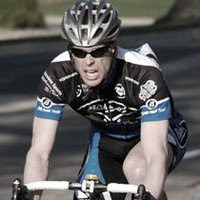Today I did my first formal "field test" to determine "lactate threshold" and initial training zones. I put lactate threshold in quotes because no actual blood was drawn, and field test in quotes since it was done indoors in a non-race situation. I used Carmichael's 8 minute test from "The Time-Crunched Cyclist." This consists of two 8 minute efforts, from which the best one is taken and used to make various calculations.
The first thing you see when looking at the yellow power trace is the remainder of the 10 minute warm up, and then two hard efforts separated by a minute. This really "clears out the carbon" before the actual tests. There's 10 minutes of recovery, and then the first test.
Even though I consciously tried not to go too hard at the start, which results in an uneven effort and blowing up too soon, you can see that this happened anyway on the first effort. Nevertheless, I don't think it was too bad, and this one ended up being my best one. Then 10 minutes of recovery, followed by the second effort. Although a bit smoother, this was a few watts less than the first effort.
The final score was 236 watts for the eight minutes. This translates to a theoretical lactate threshold of 212. Which means that if I were sufficiently motivated, I should be able to ride for an hour at 212 watts. I am having difficulty imagining what would motivate me to ride that hard for that long, except maybe being chased by a rabid dog, or perhaps chasing after Shelley Olds...
Some other interesting things to look at are how far heart rate lags behind power (the whole purpose of getting a power meter), and how the one minute recovery between the two one minute hard efforts isn't enough time to recovery fully (and will be the basis for certain drills in training). Having this data is very useful, and is proving the investment in a power meter to be worthwhile.
Saturday, January 23, 2010
Power testing
Posted by
StevenCX
at
6:34 PM
![]()
Subscribe to:
Comment Feed (RSS)





|